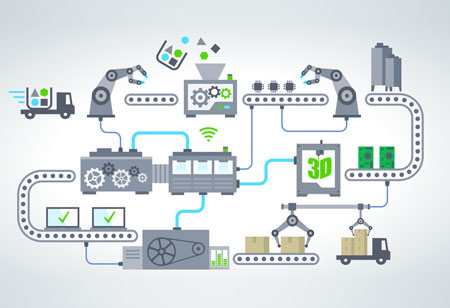THANK YOU FOR SUBSCRIBING
The Future of Work as an IoT-driven Digital Workplace
IoT is the transformational technology that brings changes in business and the way employees work. IoT connected devices generate large data that provide a base to a business’ cost-saving strategies and automation plans.

By
Apac CIOOutlook | Tuesday, December 18, 2018
Stay ahead of the industry with exclusive feature stories on the top companies, expert insights and the latest news delivered straight to your inbox. Subscribe today.
Internet of Things is the transformational technology that brings changes in business and the way employees work. IoT connected devices generate large data that provide a base to a business’ cost-saving strategies and automation plans.
Artificial Intelligence is playing a crucial role in defining the way the digital workplace is organized. It is changing the way companies’ structure their workflows, decision-making processes, and plan their strategy. AI will be applied to a wide variety of Internet of Things information, including video, still images, speech, network traffic, and sensor information.
Thus, IoT will increase the use of data where data brokering will take place from the information gathered. With the Internet of Things, a digital mesh will enable businesses to embrace risks better and create exponential value for the end consumer. The new sensors will enable a wide range of situations and events to be detected. Also, the creation, storage, use, and deletion of information related to IoT projects will increase. The OS and the hardware deployed will be trustworthy and secure under IoT systems. The power consumption will be reduced with silicon chip IoT devices.
Internet of things (IoT) devices are incorporated in the organizations to record the data about the office and staffs. The devices such as cameras and microphones are used to track the records of the staffs. Since the devices continuously monitor the staffs, there isn’t privacy to an extent. Other devices such as smart assistants and smart speakers are used by the big tech companies in the meetings to record, analyze, and to store the data.
Integrating wearable devices with the digital workplace is one of the areas of development. These devices also have many different sensors, which could be useful; perhaps, Human Resource could get an alert if anyone’s heart rate starts increasing while dealing with a particularly stressful manager.
Modern digital workplace is creating action-oriented work processes. As the digital transformation takes place in the organization, the infrastructure will turn more efficient with many challenges. The smart digital workplace is a necessary transition, which is driven by active forces of supply and demand. The growth of the smart digital workplace will have a great effect on employees, managers, and investors.





